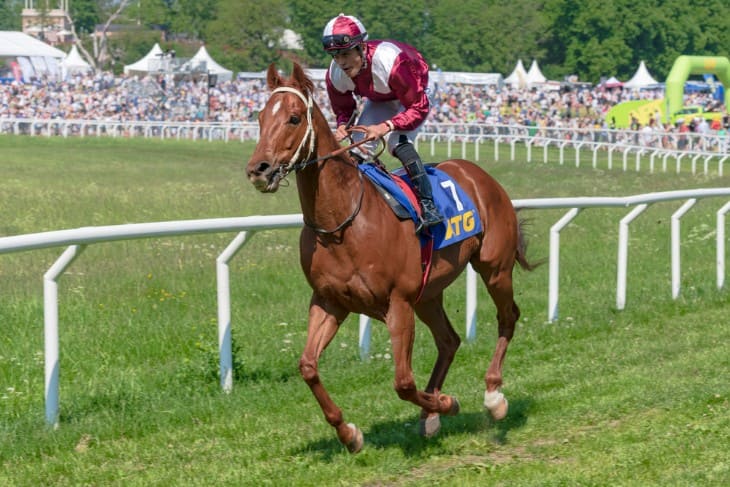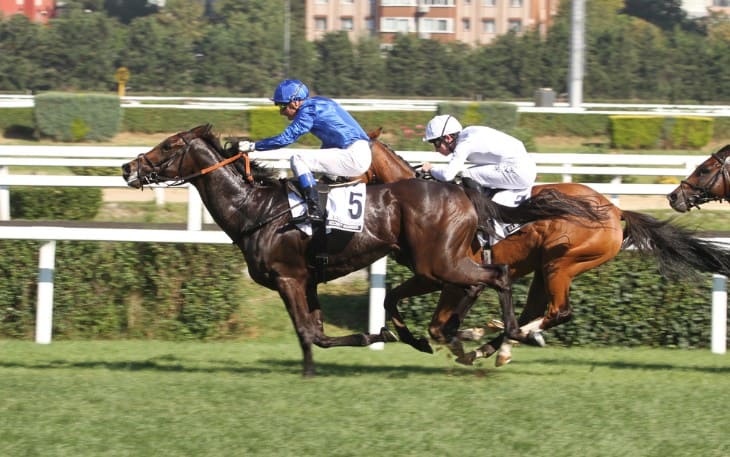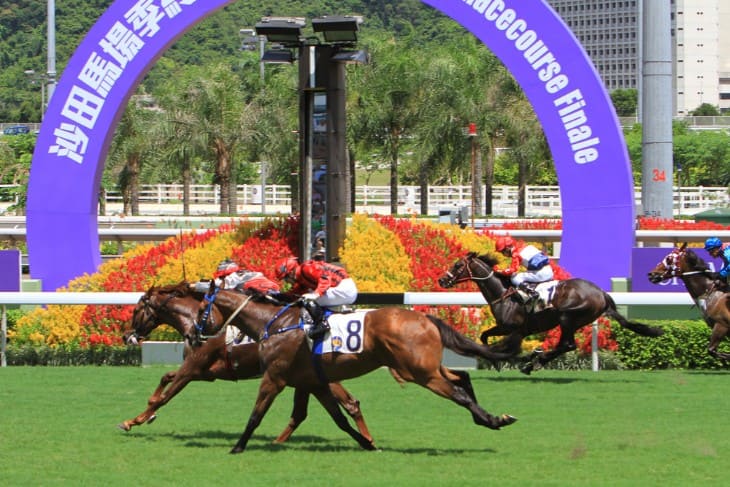- The Long History of Horse Racing in Ireland
- Geographical Distribution And Features Of Irish Racecourses
- Important Racecourses and Their Distinctive Events
- The Economic Impact of Horse Racing in Ireland
- Choosing an Irish Racecourse for Your Trip
- Events Around the Corner and How to Participate
- Final Verdict
Ireland, sometimes known as the nation of saints and students, also has a long-standing tradition of horse racing. This guides the lively world of Irish racecourses, which looks at their history, what makes them unique, and how much money they bring into the country. Racing can be enjoyed here by anyone from experts to people who have never watched a race before.
The Long History of Horse Racing in Ireland
Horse racing began in ancient Ireland. The Brehon Laws state that kings' sons should be given horses for races as long as this tradition existed. This signifies just how significant horses were within Irish culture throughout various generations.
In 1673, William Temple created the first set of rules for Irish horse races during the 17th century, establishing organised racing in Ireland. His concept paved the way for today's sport. In 1749, The Honourable Society of Sportsmen was founded and later renamed The Turf Club in 1784; it played a significant part in shaping the modern-day Irish horse racing industry.
By the 18th century, horse racing had become an essential part of life in Ireland. Thoroughbred horses imported from the Middle East dramatically improved both quality and interest levels around races; these animals are ancestors to today's racehorses, thus helping make our nation one of the leading nations for thoroughbred breeding or racing.
Today, Ireland is recognised worldwide for its outstanding contribution to this activity. It has almost daily fixtures and hosts more flat races than any other country while still being preeminent over jumps. Horse Racing Ireland (HRI) ensures maintenance standards remain high through time, keeping days like these alive and regulating them appropriately since they're such critical cultural events within our communities.
Geographical Distribution And Features Of Irish Racecourses
- Territory Variety: Twenty-six tracks are spread across four provinces, each giving visitors unique experiences based on location, climate, etc. Every province boasts various races best suited to their climate and other factors. For instance, Laytown is the only racecourse in Europe where horses run on the sand along the seashore during low tide, which provides a breathtaking spectacle that cannot be found anywhere else. This ensures that tourists can have different experiences depending on where they tour within Ireland.
- Different Track Traits: The physical characteristics of these tracks range from flat to undulating, influencing what type of racing takes place on them. The contour of a racecourse plays a vital role in how different races are run. Flat courses like The Curragh allow high-speed contests over level ground. At the same time, more hilly circuits such as Leopardstown offer challenging conditions for jump racing events where horses must negotiate obstacles up and down gradients – so not only does it affect running styles but also adds another dimension to the strategy involved with winning races through knowing or adapting oneself towards the layout.
- Tracks for All Weather and Every Season: Weather has never been a problem in Dundalk-like tracks that can be used throughout the year. The all-weather track at Dundalk is essential for ensuring no breaks in racing, particularly during the wetter months in Ireland when it would otherwise become impossible to stage races. This means that every day of every month always has something happening on the racetracks, which keeps people entertained and gives them chances to bet on horses with money they don't have or do anything else enjoyable like that, so yes, also good things happen too.
- Culture and Accessibility: It is not just a sporting venue but also a cultural gathering place where people from various backgrounds can come together quickly through different modes of transportation, such as buses or trains. Irish racecourses form part of the tapestry of local life and often act as social centres where people gather for race meetings, regardless of their age or background, thus making this event accessible even more widely because most public transports connect most racecourses well enough, allowing both locals and tourists alike easy access without much hassle involved which makes horse racing remain popular among many different people including those who may not have other opportunities available because they live far away.
These factors contribute to what makes the horse racing scene unique worldwide while at the same time attracting large numbers from home and abroad.

Important Racecourses and Their Distinctive Events
- Leopardstown: Renowned for its Christmas Festival, this racecourse has several high-profile races that attract large crowds. Situated near Dublin, Leopardstown is a significant flat and National Hunt racing centre. The Christmas Festival held is especially famous and comprises several days of top-level racing that draws fans worldwide. Still, it is not just racing—the festive activities make it one of the social highlights in Ireland's calendar.
- Punchestown: Home to the National Hunt Festival, one of Ireland's most significant national hunt meetings. Punchestown is synonymous with Irish jump racing and hosts the National Hunt Festival every spring. This event is vital for any jumps fan as it features some of the most important races during the season, including the Punchestown Gold Cup; moreover, it represents a key point in time where those who work within or follow horse racing can come together amidst thrilling contests set against lively atmospheres.
- The Curragh: The Irish Derby at The Curragh Racecourse marks a significant point in any flat season. Located in County Kildare, this course is often called "the home of Irish Flat racing" and hosts many such events throughout its calendar; however, none are more noteworthy than June's annual running of "The Derby." Attracting some top-notch equine talent from home and abroad makes it a must-see viewing for followers and an unmissable date within industry circles.
- Galway: The Summer Meeting at Galway involves more than just horse races – it also blends them with rich cultural experiences. A week-long festival combining first-rate sport with vibrant culture takes place each year at Galway Racecourse during the summer months, featuring mixed disciplines (flat & jump); this meeting is noted for its atmosphere, which always proves very popular among tourists as well locals who appreciate the combination of a sporting occasion and good-time celebration.
These four significant racecourses, along with their most famous meetings, showcase the competitive nature of Irish horse racing and its ability to entertain and stimulate local economies. Each event brings something different, creating an exciting blend across Ireland's course portfolio.
The Economic Impact of Horse Racing in Ireland
Horse racing is a big business in Ireland, contributing significantly towards national GDP figures. Every year, the industry injects over €1.1bn into the country's economy, thereby underscoring its position as not just another 'sport' but a significant economic driver too; this fact alone should never be underestimated or ignored by those making decisions.
That said, employment remains one area where benefits can be seen easily; roughly 17,000 people work in various roles related directly or indirectly to thoroughbred breeding training, etc., while many thousands more earn their livelihoods indirectly through sectors such as hospitality or tourism—particularly during major race meetings when visitors flock from all parts of the globe.
Furthermore, these events themselves act as magnets for tourists; major festivals attract huge numbers who spend money on hotels / B&Bs, food, drink, etc., thus giving local businesses a welcome boost while adding colour, vibrancy, and social and cultural fabric wherever they happen to take place.
In Ireland, horse racing is a sport and part of the economy and culture. The industry promotes traditional skills and enterprises and projects Ireland's image worldwide as the best in this kind of game. For this reason, no effort should be spared to sustain the sector's prosperity, which is key to the country's economic health.

Choosing an Irish Racecourse for Your Trip
There are many things to consider when choosing an Irish racecourse for your trip. First and foremost, consider the various factors that appeal to you personally and would make your experience enjoyable.
The type of racing must always be considered; if you love flat racing, go to Curragh or Leopardstown, where some of the best races happen yearly. If jumps are more interesting for you, Punchestown or Fairyhouse should be good options as they host unique events, too. Each track has its fixtures list with standout meetings, so it's important to check this against when planning your visit dates.
The next thing that should not be overlooked is how accessible different courses are from one another (and Dublin). Public transport in Ireland is excellent, meaning all significant tracks can easily be reached by bus or train – ensure there's a service running on race day! If driving, also investigate the available parking facilities.
Another factor that contributes to choosing a particular course could be cost. General admission tickets usually cover most enclosures, but opportunities such as private boxes will always exist, which give more exclusive access depending on what suits best financially at any given time. Remember, too, that some courses might charge higher entrance fees during feature meetings, so it's worth being aware of this before arriving.
Finally, overall experience plays its part, too; do you want a fun-filled family day out or somewhere with more severe racing? Some tracks like Galway have lively atmospheres, especially during their summer festival, where entertainment and activities are laid on alongside thrilling jumps, whilst others, including Laytown, offer something unique – beach racing!
Considering these factors—type of racing, accessibility, cost, and overall experience—will enable you to choose the Irish racecourse for your visit that best suits all preferences, thus ensuring a memorable, enjoyable day(s) at the races.
Events Around the Corner and How to Participate
- Review Racecourse Timetables: Identify when each racecourse will be having its events. Every Irish racecourse has its calendar with many different occasions throughout the year. Big festivals and races that attract huge crowds are held in significant racecourses such as Leopardstown, The Curragh and Punchestown. Check their schedules on their official websites for the best time to see live horse racing.
- Buy Tickets: Secure your spot at the events. Once you have chosen an event you want to attend, it is time to buy tickets. Most racecourses provide a range of ticketing options, from general admission to more exclusive packages like private boxes or dining experiences. Early booking is often recommended, especially for major events, because they can sell out fast.
- Go to Festivals: Attend the more significant celebrations. Festivals are what Irish racecourses are famous for; these include the Galway Races Summer Festival and Leopardstown Christmas Festival, among others. Such events feature thrilling racing action alongside social festivities such as fashion shows, dining and entertainment. They offer a whole experience for racing fans and anyone who wants to have fun in a vibrant social gathering.
- Live Streaming: Watch races wherever you may be. If you cannot physically make it onto the racecourse, do not worry too much because many Irish racing events can be accessed through live streaming. Services like Racing TV exist, and some betting sites have this option, too, where races can be watched as they happen from home or anywhere else. This is great since it ensures one stays connected with Irish horse racing without missing anything.
- Community Engagement: Be part of the horse racing community. Having engagement with people involved in this sport could make your experience better than ever before, so try it out! This could be by joining social media groups related to horse racing, becoming a fan club member, or even attending public events and meetups usually organised around significant race days. Being part of the community can provide you with more profound knowledge about the game and link you up with like-minded individuals who share your interests.
These ways will help you participate in Irish horse racing whether you plan on going there physically or engaging from a distance. Each method provides a different way to enjoy one of Ireland's most loved sports.
Final Verdict
Irish racecourses act as sports venues and cultural landmarks through which the rich heritage of Ireland is showcased while contributing significantly to its economy. Every course has a story to tell through races hosted com, communities supported, and history preserved within it. The racecourses in Ireland offer an irresistible mix of thrill, tradition and hospitality that is bound to captivate anyone, be it a seasoned punter, casual spectator or tourist looking for an authentic Irish experience.








